.
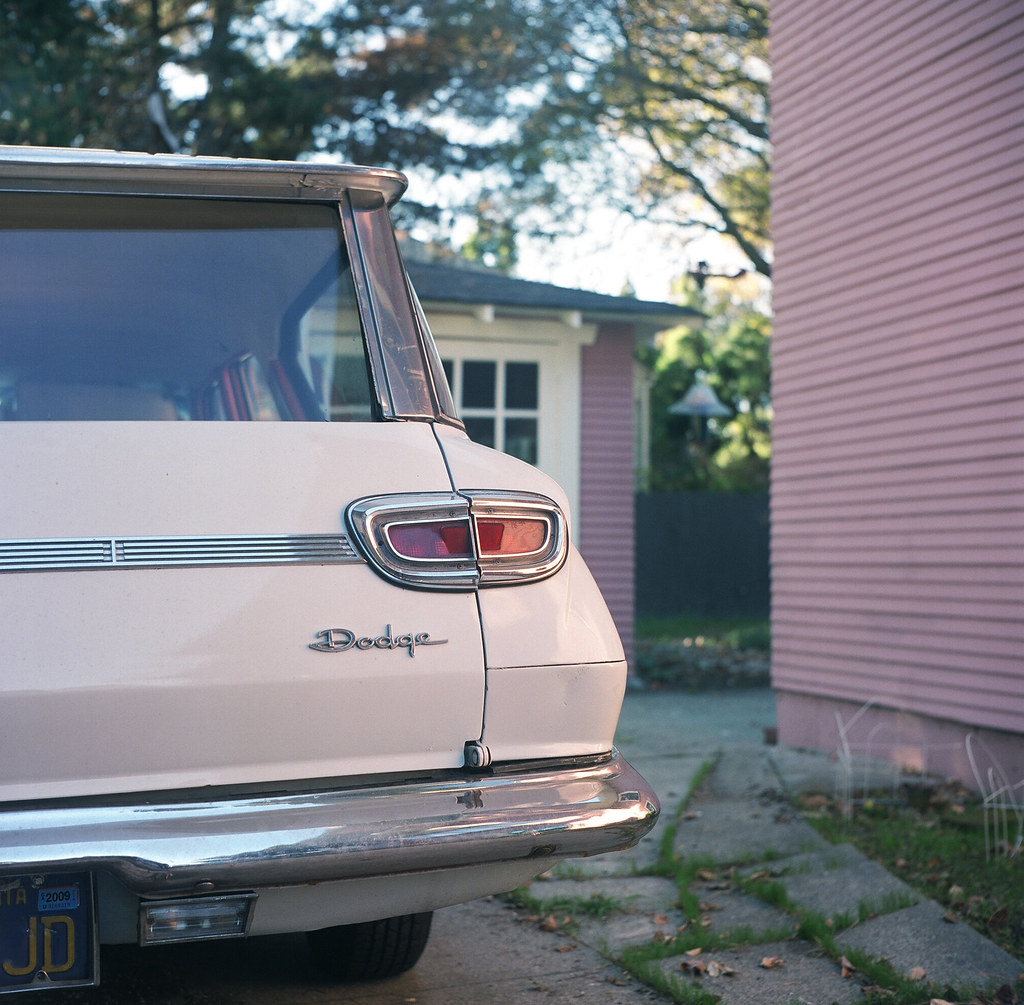
Untitled (Dodge, Alameda, California): photo by Christopher Hall (Dead Slow), 16 January 2009
Samuel Beckett on involuntary memory
The most successful evocative experiment can only project
the echo of a past sensation, because, being an act of intellection, it
is conditioned by the prejudices of the intelligence which abstracts
from any given sensation, as being illogical and insignificant, a
discordant and frivolous intruder, whatever word or gesture, sound or
perfume, cannot be fitted into the puzzle of a concept. But the essence
of any new experience is contained precisely in this mysterious element
that the vigilant will reject as an anachronism. It is the axis about
which the sensation pivots, the centre of gravity of its coherence. So
that no amount of voluntary manipulation can reconstitute in its
integrity an impression that the will has–so to speak–buckled into
incoherence. But if, by accident, and given favourable
circumstances (a relaxation of the subject’s habit of thought and a
reduction of the radius of his memory, a generally diminished tension of
consciousness following upon a phase of extreme discouragement), if by
some miracle of analogy the central impression of a past sensation
recurs as an immediate stimulus which can be instinctively identified by
the subject with the model of duplication (whose integral purity has been retained because it has been forgotten),
then the total past sensation, not its echo nor its copy, but the
sensation itself, annihilating every spatial and temporal restriction,
comes in a rush to engulf the subject in all the beauty of its
infallible proportion.
The most trivial experience -- he says in effect -- is encrusted with elements that logically are not related to it and have consequently been rejected by our intelligence: it is imprisoned in a vase filled with a certain perfume and a certain colour and raised to a certain temperature. These vases are suspended along the height of our years, and, not being accessible to our intelligent memory, are in a sense immune, the purity of their climatic content is guaranteed by forgetfulness, each one is kept at its distance, at its date. So that when the imprisoned microcosm is besieged in the manner described, we are flooded by a new air and a new perfume (new precisely because already experienced), and we breathe the true air of Paradise, of the only Paradise that is not the dream of a madman, the Paradise that has been lost.
But if this mystical experience communicates an extratemporal
essence, it follows that the communicant is for the moment an
extratemporal being. Consequently the Proustian solution consists, in so
far as it has been examined, in the negation of Time and Death, the
negation of Death because the negation of Time. Death is dead because
Time is dead. (At this point a brief impertinence, which consists in
considering Le Temps Retrouvé almost as inappropriate a description of the Proustian solution as Crime and Punishment
of a masterpiece that contains no allusion to either crime or
punishment. Time is not recovered, it is obliterated. Time is recovered,
and Death with it, when he leaves the library and joins the guests,
perched in precarious decrepitude on the aspiring stilts of the former
and preserved from the latter by a miracle of terrified equilibrium. If
the title is a good title the scene in the library is an anticlimax.)
Samuel Beckett: from Proust (1931)
Samuel Beckett: from Proust (1931)
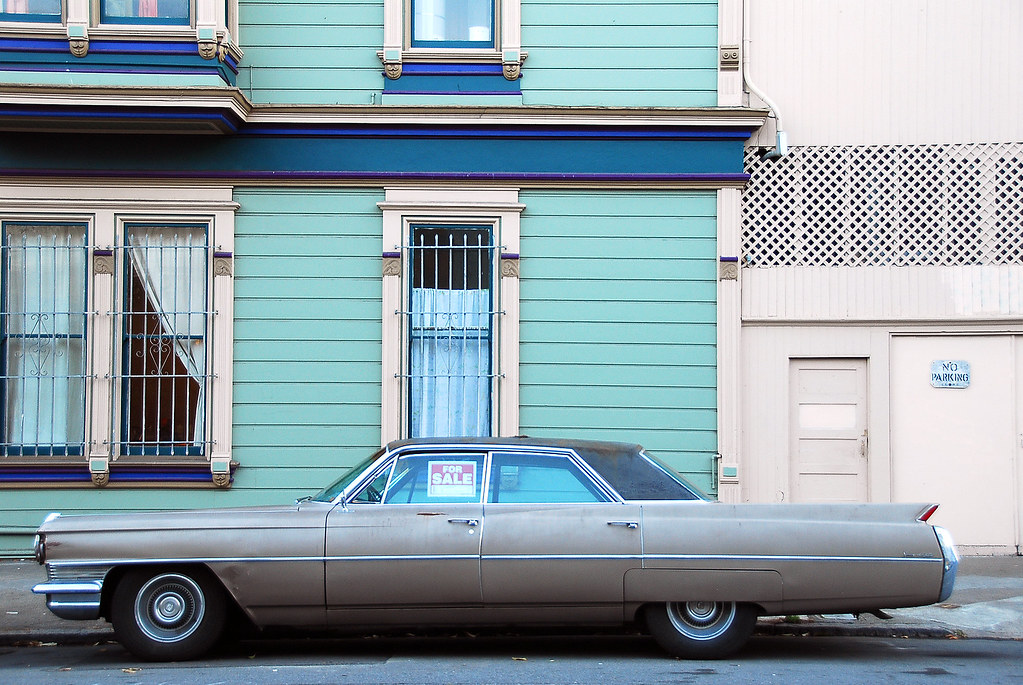
Boat (Cadillac, San Francisco, California): photo by Christopher Hall (Dead Slow), 23 October 2008
I find your work to be almost instantly recognizable by the tones, mood, and atmosphere of your shots. Was this a sort of vision you worked to achieve or is it more natural than intentional?
I think it was a happy accidental discovery, which I now doggedly pursue. I prefer the muted light you get on overcast days, and it’s a look that comes through in most of my photos. I almost always wish for gloomy weather. When it comes to photography, I’ll usually just stay home if it’s bright and sunny outside.
A large percentage of your work is focused on the automobile and its place in our environment. At some point was that direction a conscious decision?
I think the automobile really defines the American way of life. For better or worse, our entire country has been (re-)designed for the benefit of the automobile driver. On the one hand, the strip malls you used to find in so many places were such horrific creations, yet they were a by-product of the suburban neighborhoods I grew up in and where I felt so safe during my childhood. Eventually, the strip malls were bulldozed so they could build an enormous Wal-Mart, with a huge parking lot where you can park your car while you buy stuff. That’s probably a good starting point for understanding the love/hate relationship I have with the automobile.
I have noticed in comments you have made, that the automobile itself is not particularly a point of passion for you, yet you seem to use it as a starting point for something larger – as if it becomes an ingredient for something more telling. Could you comment on that?
Well, I think the car is a key ingredient in the casserole, but I don’t really see my photos as being just about a car. That’s really secondary. The scenes are all “found,” never arranged, but I like taking an approach to composition that helps make things seem just a bit implausible. Sometimes it’s because everything seems trapped in a time capsule -- in others, there’s some unbelievable color coordination happening that people suspect is staged. I like that my photos can convey the idea that things aren’t quite what they seem. There’s also a good deal of processing childhood memories involved. I had a happy childhood in the suburbs, and everything seemed perfect to me at the time. Dad went to work, Mom was a housewife, there were always meals on the table, and I spent my days in school with the other kids. But the 60′s really weren’t that happy when you think about it. The Civil Rights movement was a source of tremendous turmoil; we were bogged down in a war in Vietnam; tensions were often high because of the Cold War; and one assassination followed another. But there we were, enjoying our happy life in the suburbs, and gas cost 34 cents a gallon.
I think my photos mourn a place that probably never really existed, except in my own mind. Everything was fine, but only because I wasn’t old enough to know better. There are traces of that time that you can find even now, if you look hard enough. But was it really the way you remember? Did it even exist?
Christopher Hall, from an interview in American Elegy, 1 May 2011

Untitled (Chevrolet, Alameda, California): photo by Christopher Hall (Dead Slow), 25 October 2008

Odd Fellow (Dodge Dart Swinger, Vallejo, California): photo by Christopher Hall (Dead Slow), 9 December 2008
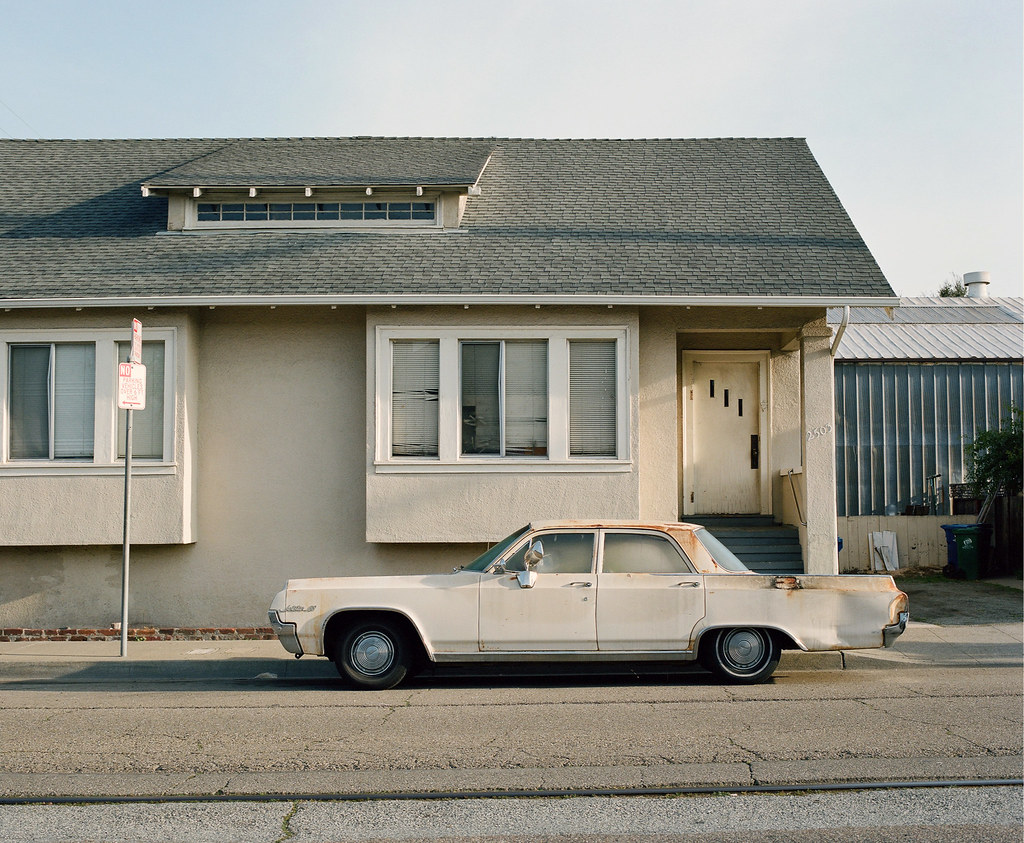
West End Town (Alameda, California): photo by Christopher Hall (Dead Slow), 2 February 2010
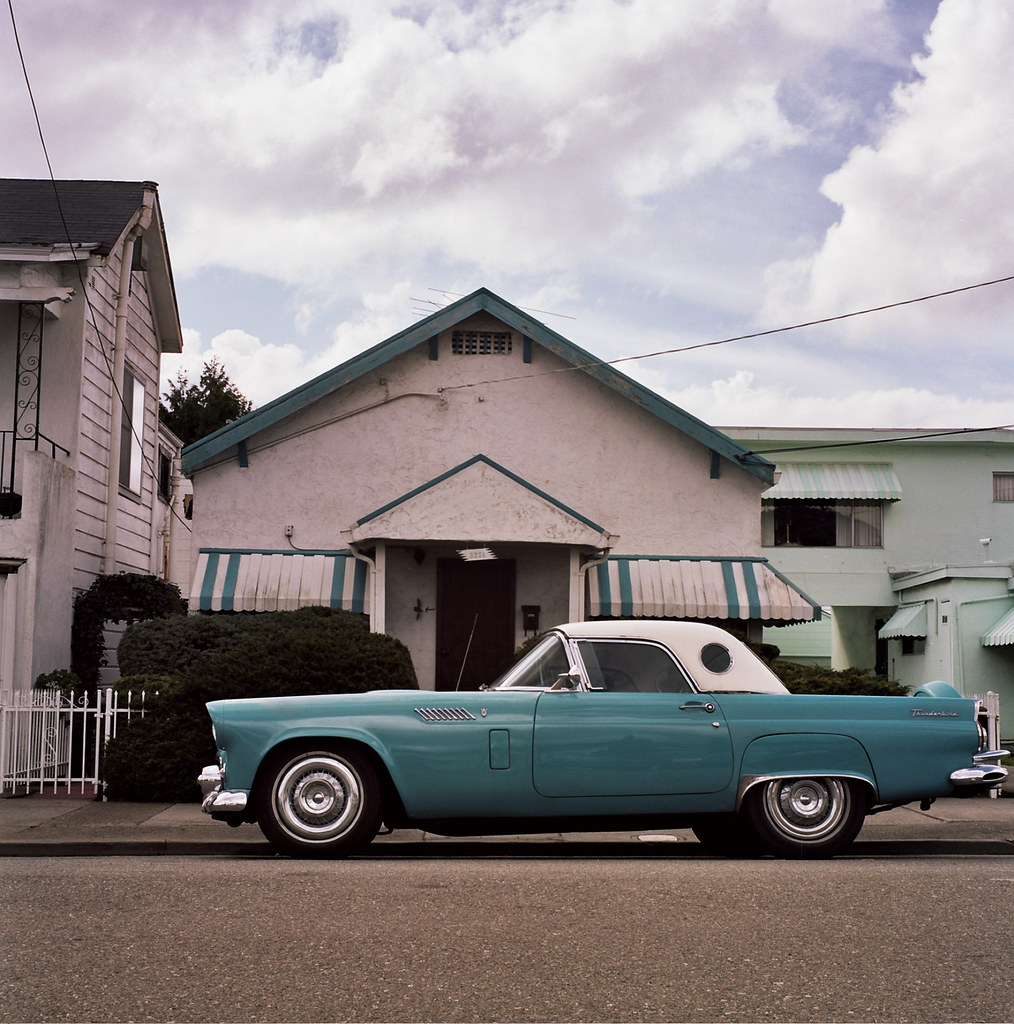
Untitled (Ford Thunderbird, Berkeley, California). While I was shooting this, a neighbor came out and told me about the car. It's owned by Miss Ruthie Witherspoon, who bought it new in 1956 and has been driving it ever since. That's Miss Witherspoon's house in the background, too: photo by Christopher Hall (Dead Slow), 10 February 2010
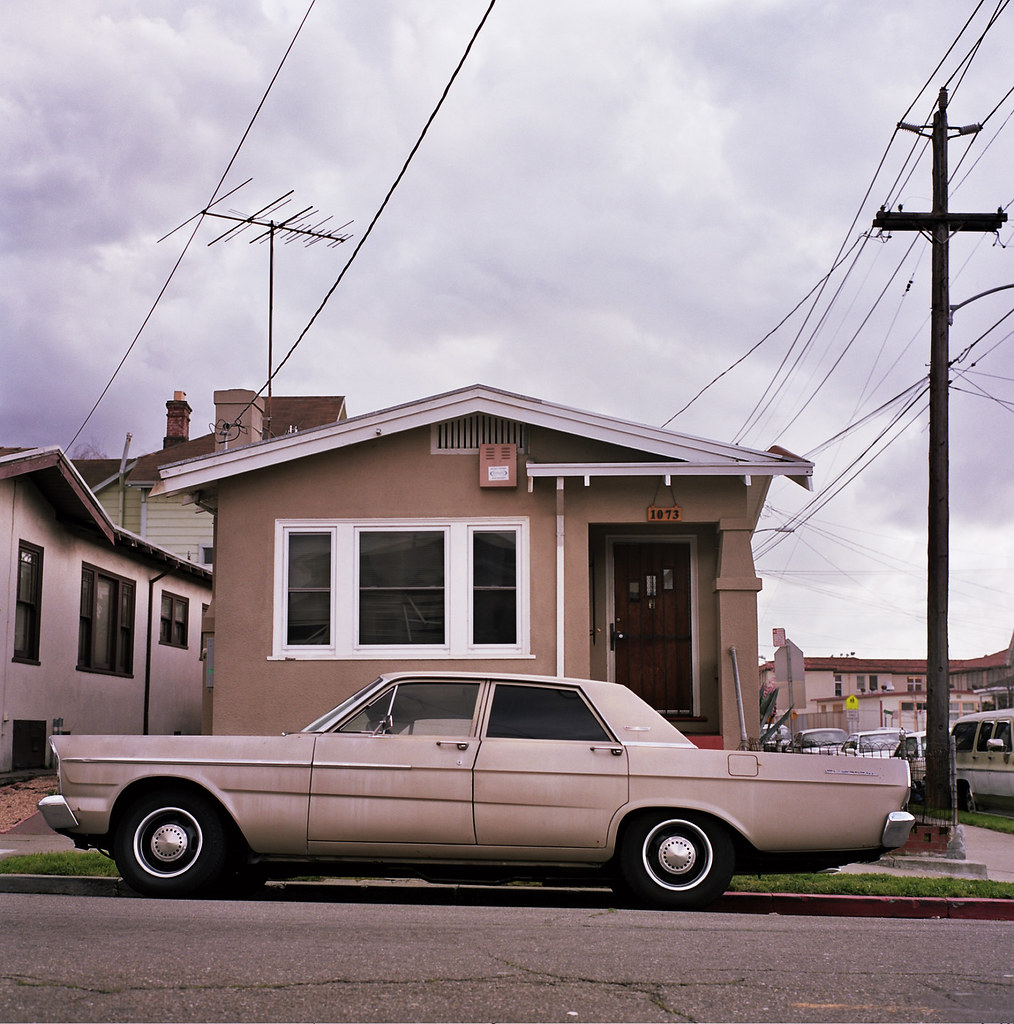
Untitled (Ford, Oakland, California): photo by Christopher Hall (Dead Slow), 19 February 2010

Everything's gone green (Camaro and Lincoln, Oakland, California): photo by Christopher Hall (Dead Slow), 24 March 2010

Untitled (Oakland, California): photo by Christopher Hall (Dead Slow), 28 March 2010
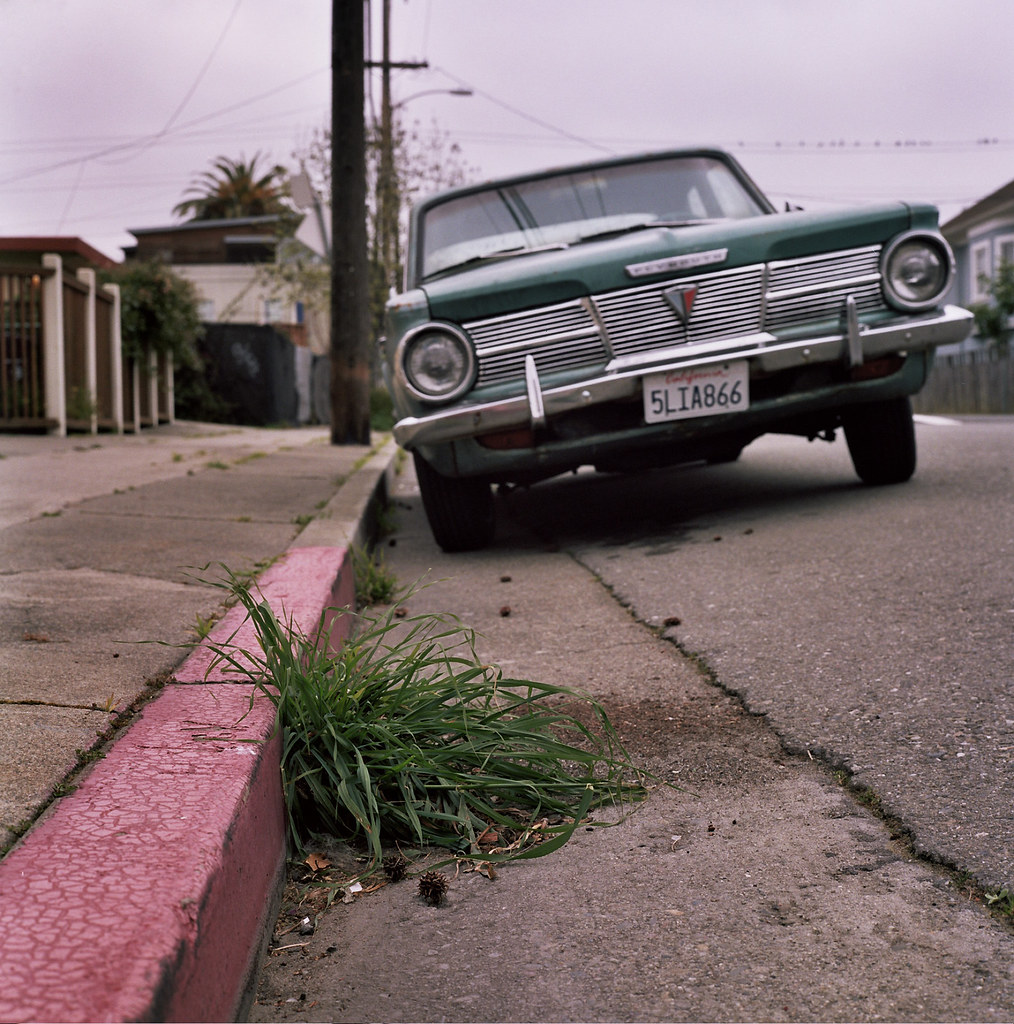
Untitled (Plymouth, Oakland, California): photo by Christopher Hall (Dead Slow), 1 April 2010
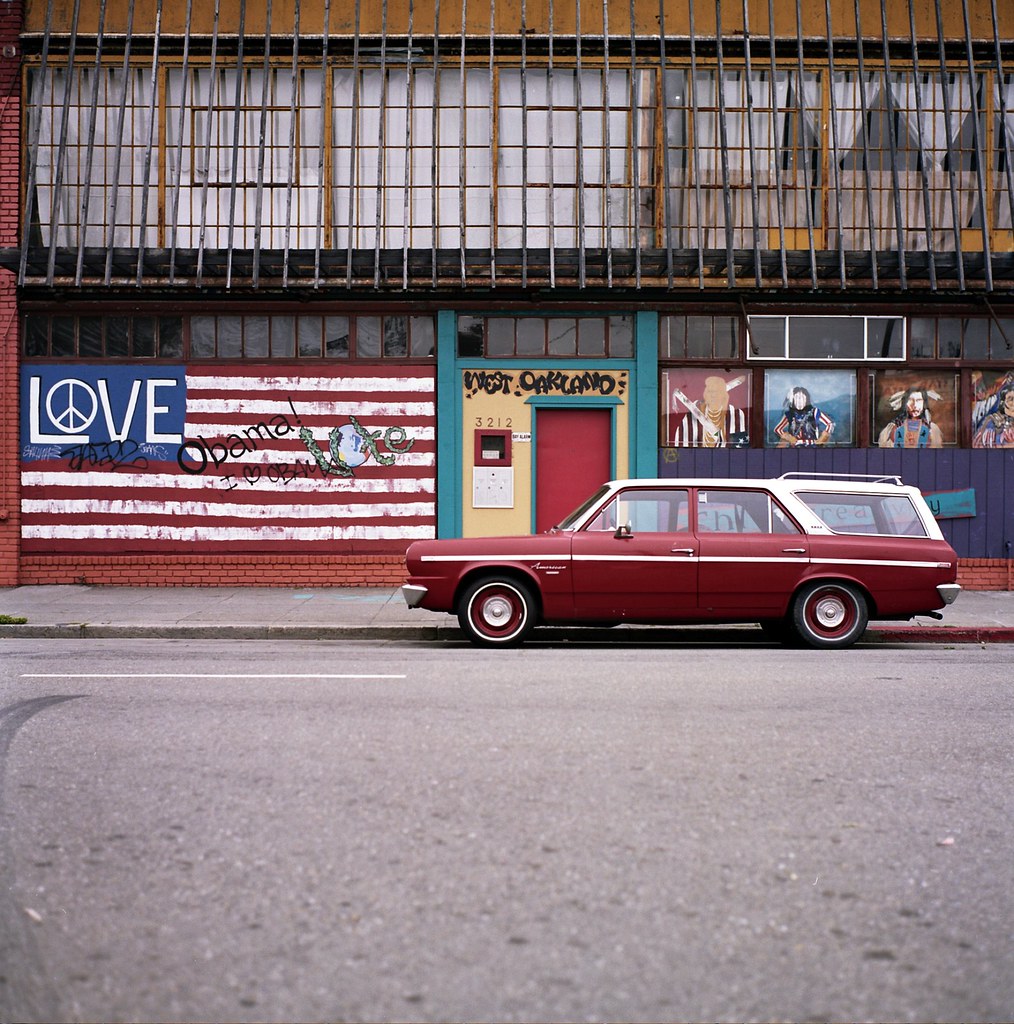
Untitled (AMC Ambassador Wagon, West Oakland, California): photo by Christopher Hall (Dead Slow), 20 May 2010
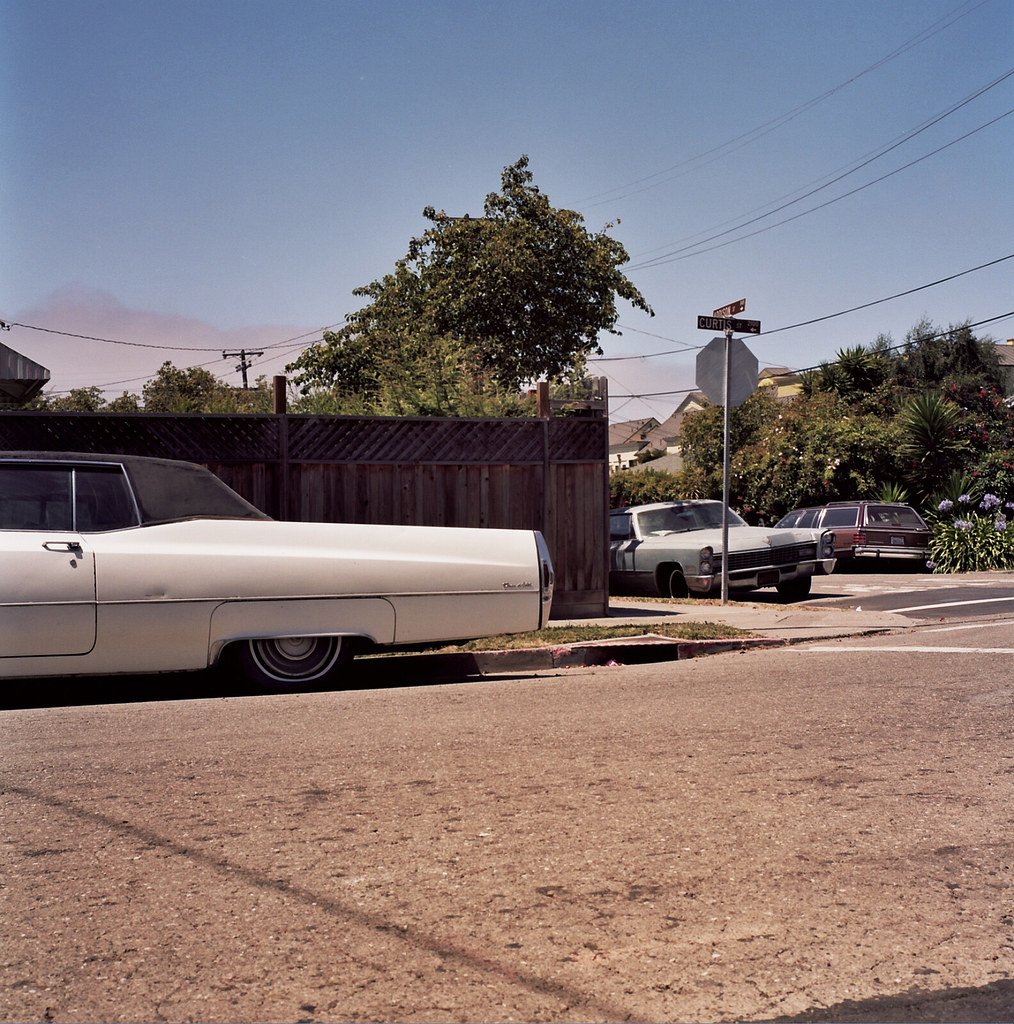
Curtis and Addison Streets, Berkeley: photo by Christopher Hall (Dead Slow), 15 August 2010
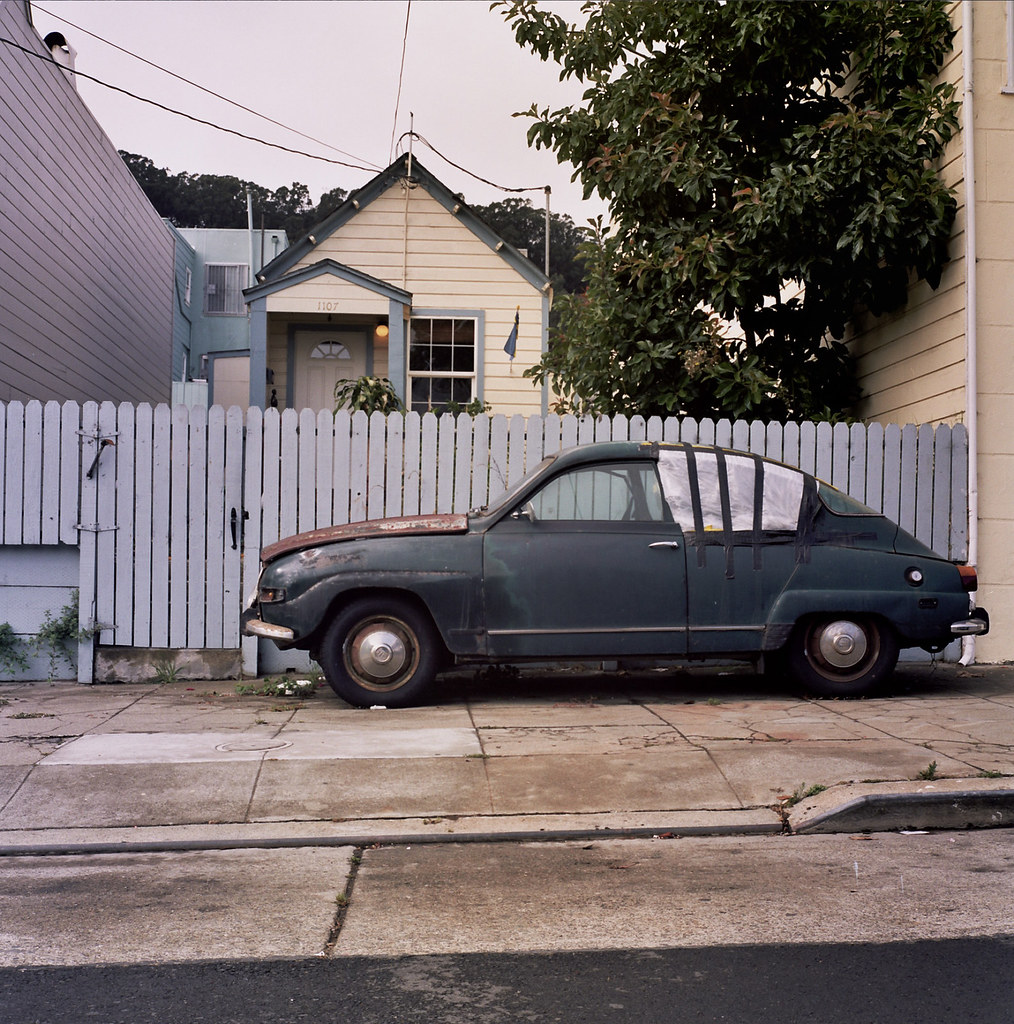
Untitled (Saab, San Francisco, California): photo by Christopher Hall (Dead Slow), 23 September 2010
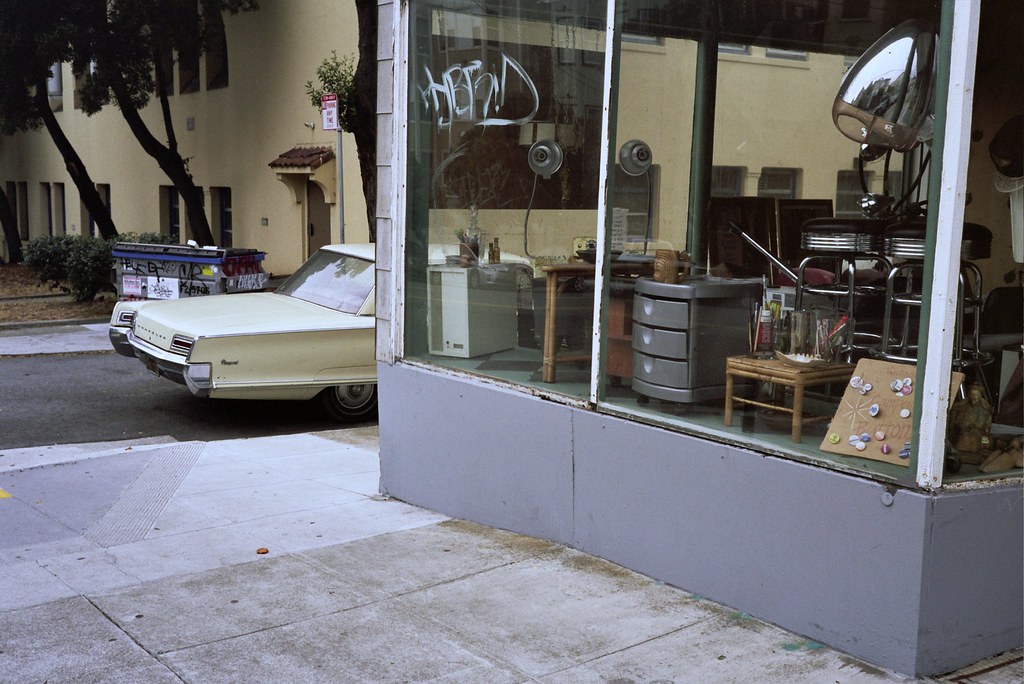
Untitled (16th Street, San Francisco, California): photo by Christopher Hall (Dead Slow), 5 November 2010
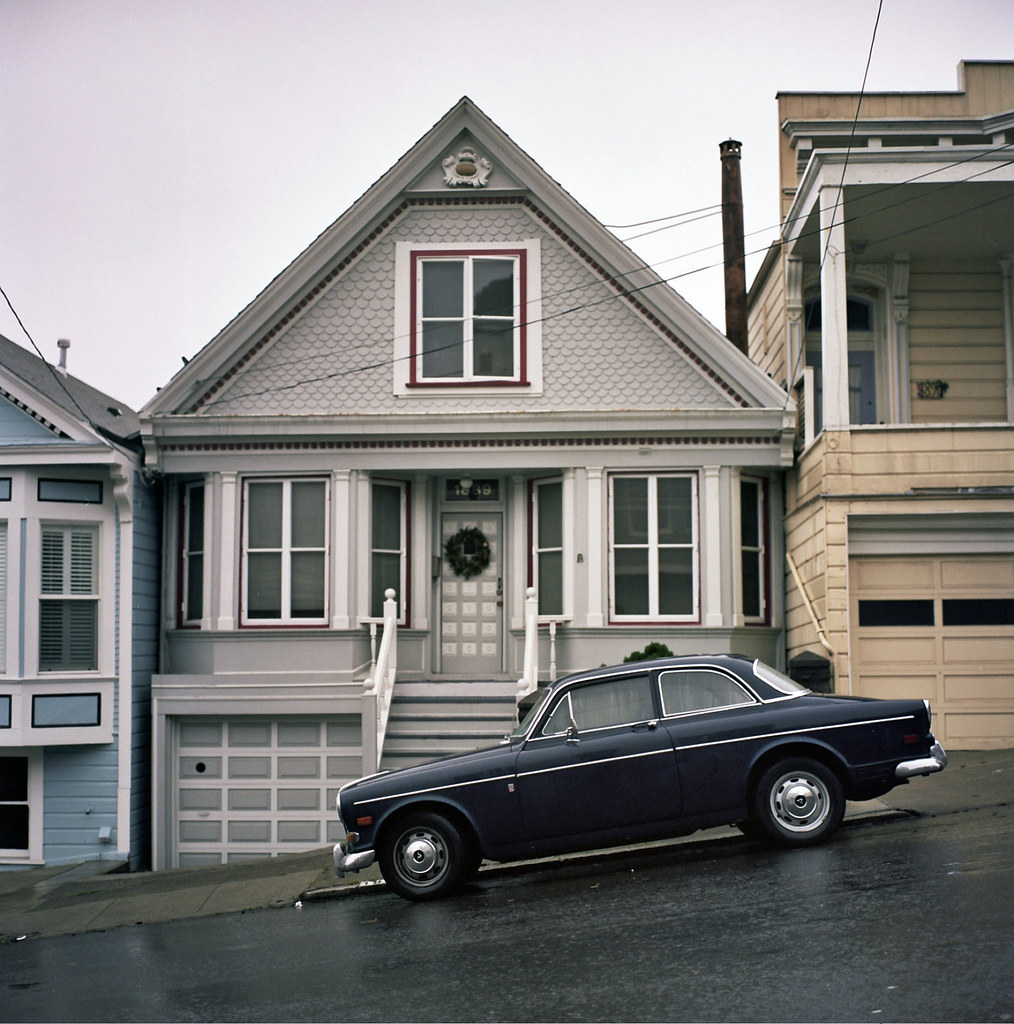
Untitled (Volvo, San Francisco, California): photo by Christopher Hall (Dead Slow), 28 December 2010

Untitled (Potrero Hill, San Francisco, California): photo by Christopher Hall (Dead Slow), 1 May 2011
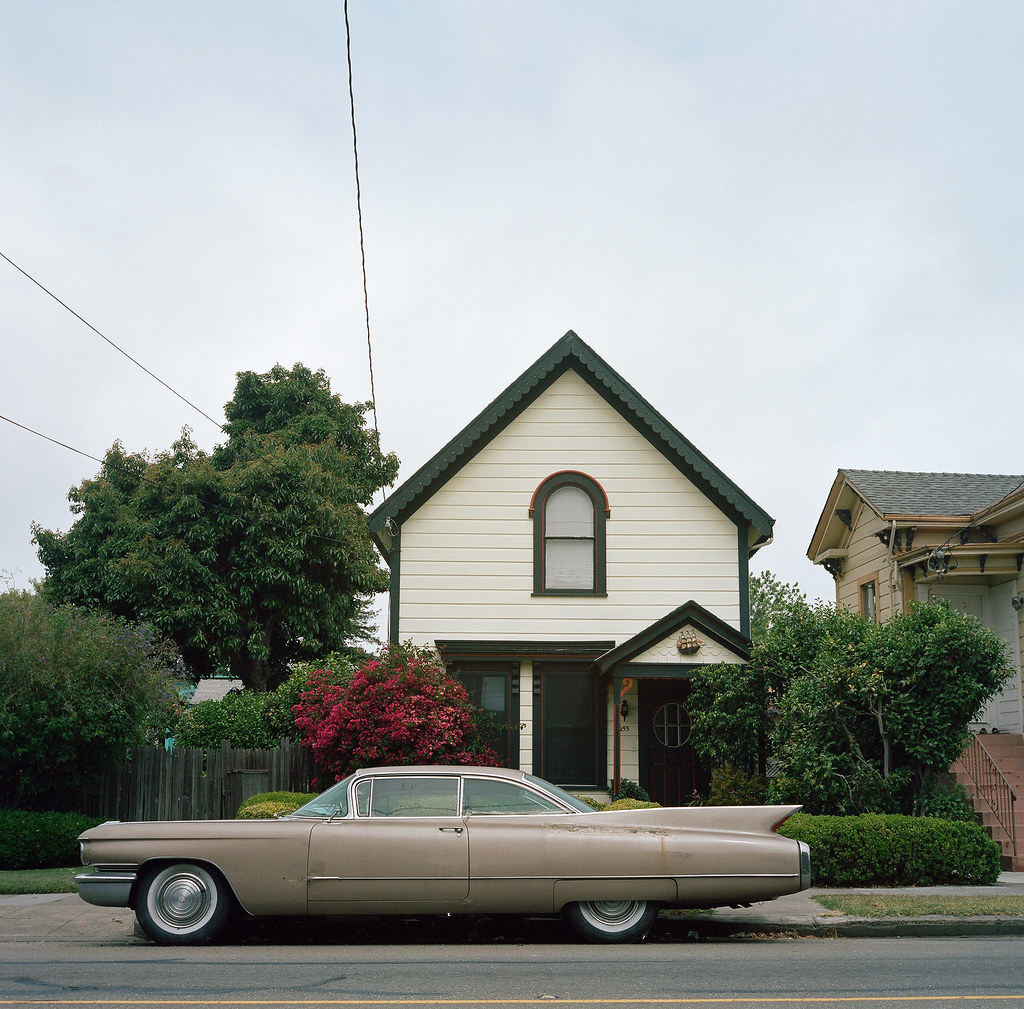
Untitled (Cadillac, Alameda, California): photo by Christopher Hall (Dead Slow), 1 May 2011
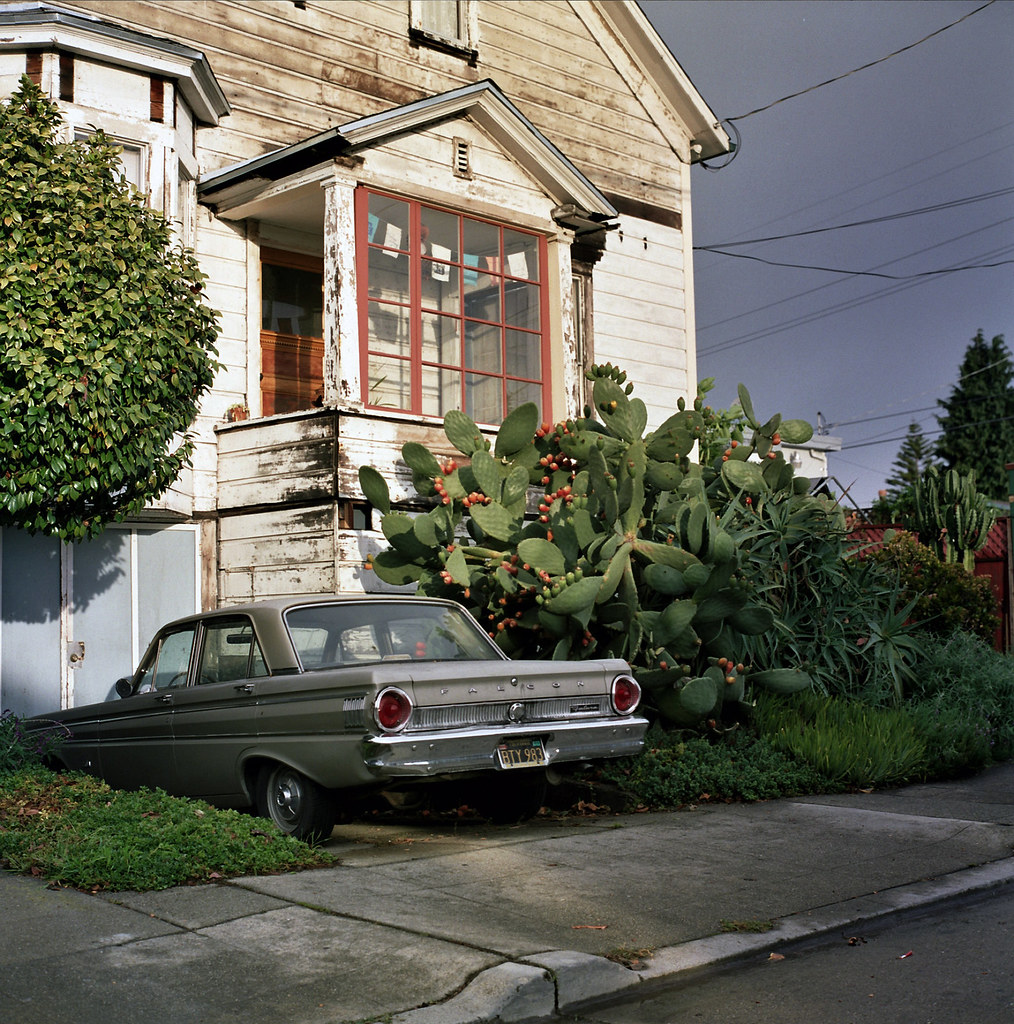
Untitled (Ford Falcon, Emeryville, California): photo by Christopher Hall (Dead Slow), 8 December 2011
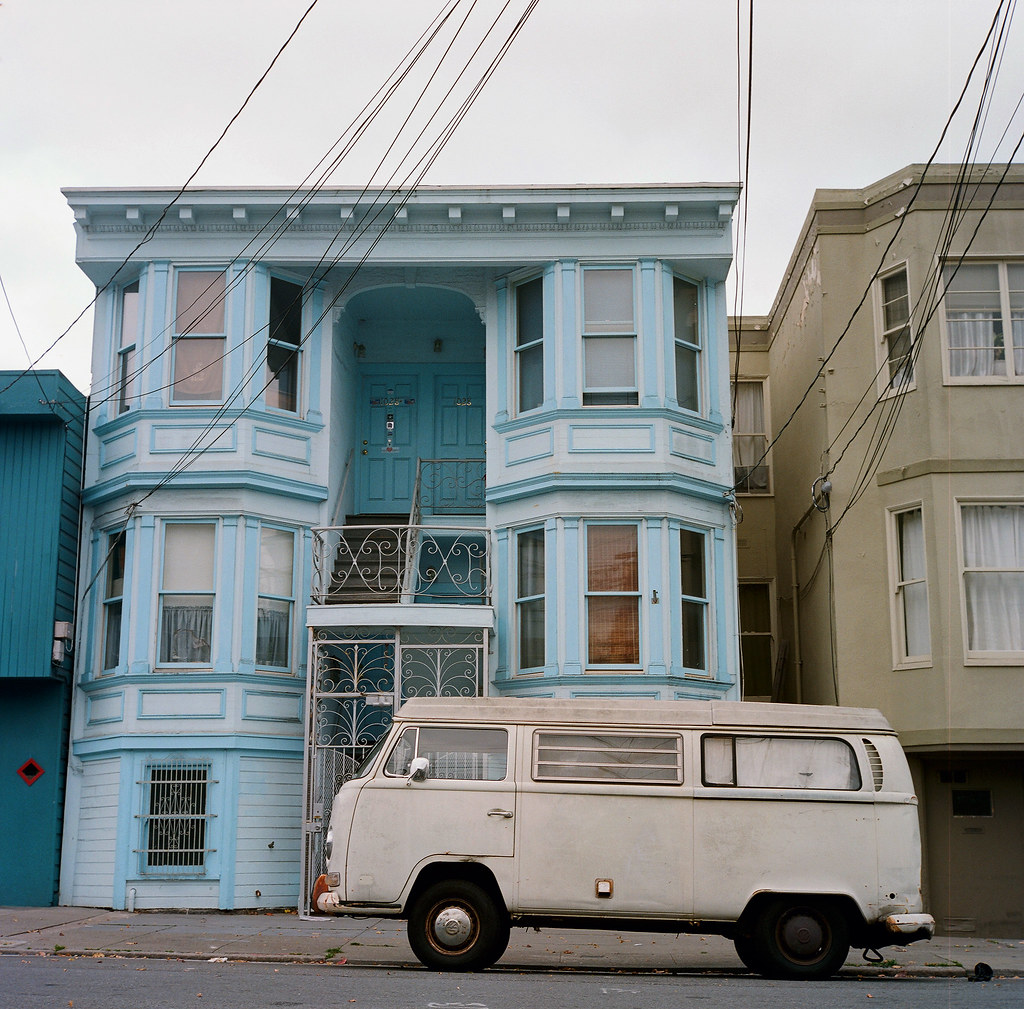
Florida Street (VW Bus, Mission District, San Francisco, California): photo by Christopher Hall (Dead Slow), 21 January 2012

Untitled (Ford Thunderbird, San Francisco, California): photo by Christopher Hall (Dead Slow), 22 January 2012

Untitled (Plymouth, San Francisco, California): photo by Christopher Hall (Dead Slow), 3 February 2012
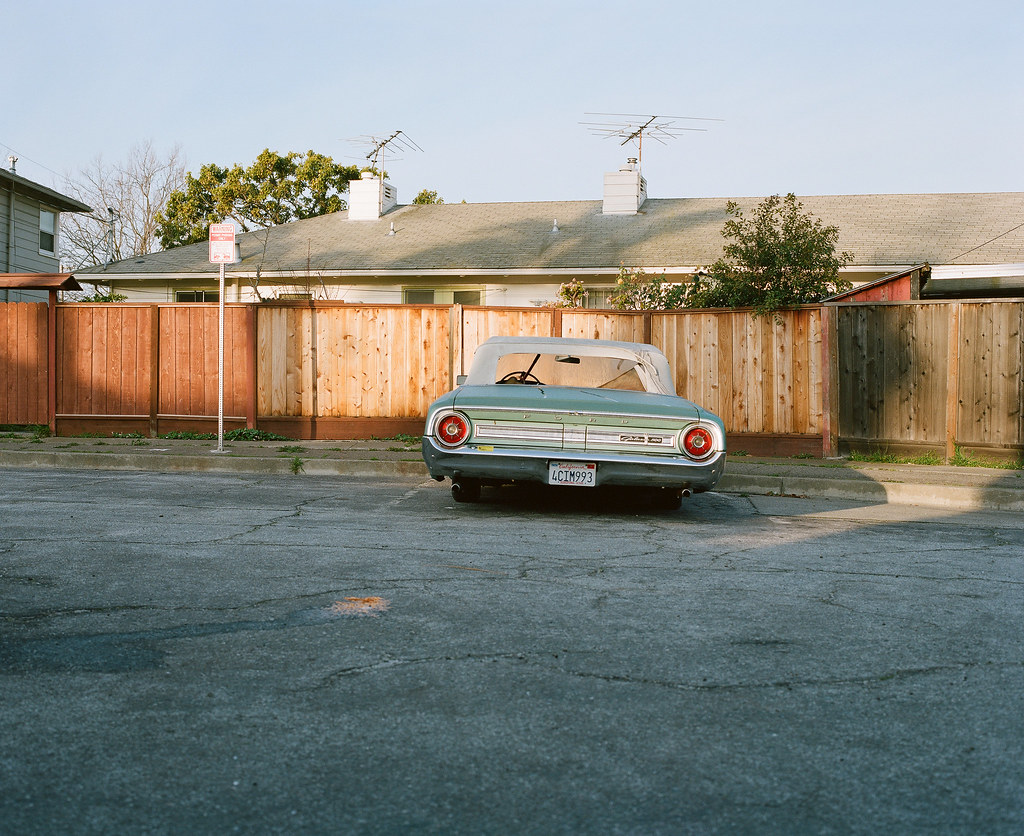
Untitled (Ford Galazie 500, Alameda, California): photo by Christopher Hall (Dead Slow), 12 February 2012

Union and Jones (San Francisco, California): photo by Christopher Hall (Dead Slow), 7 June 2012
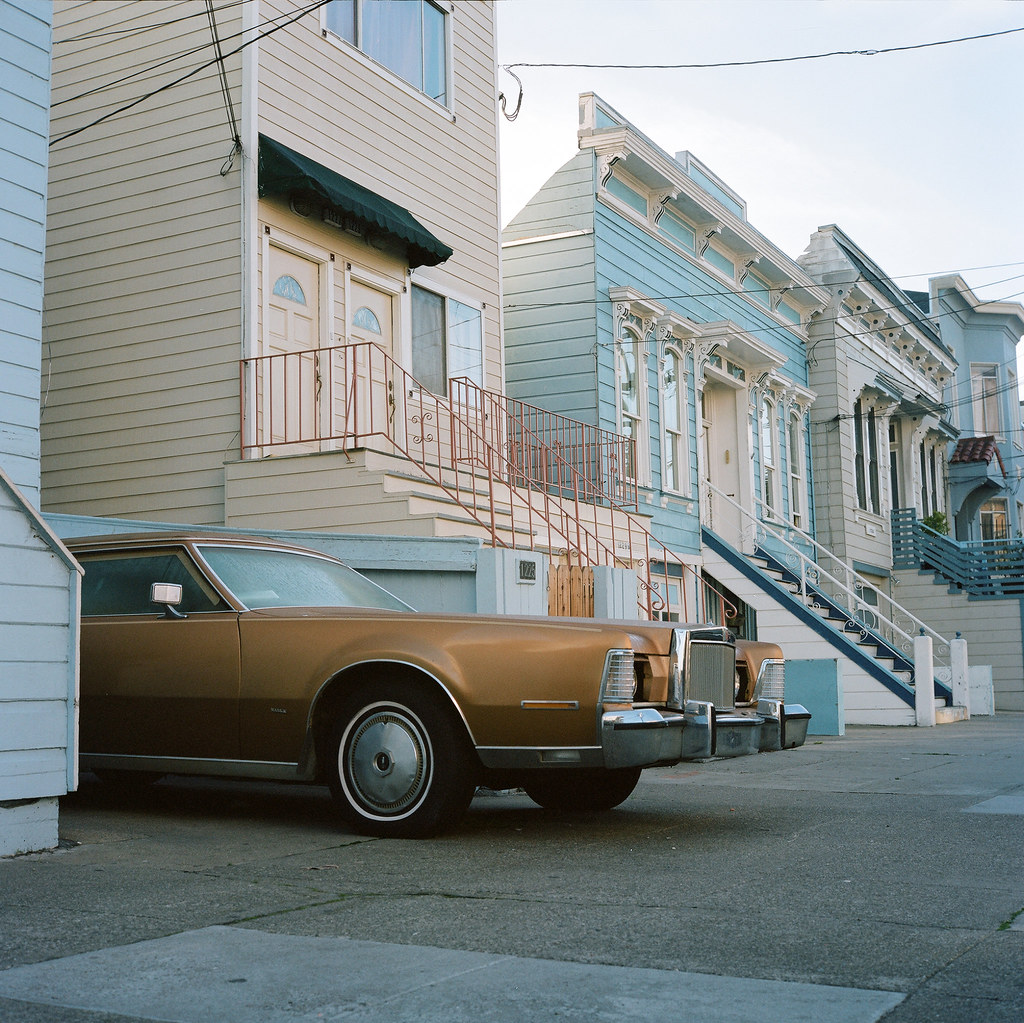
Untitled (Lincoln Continental, San Francisco, California): photo by Christopher Hall (Dead Slow), 14 December 2012
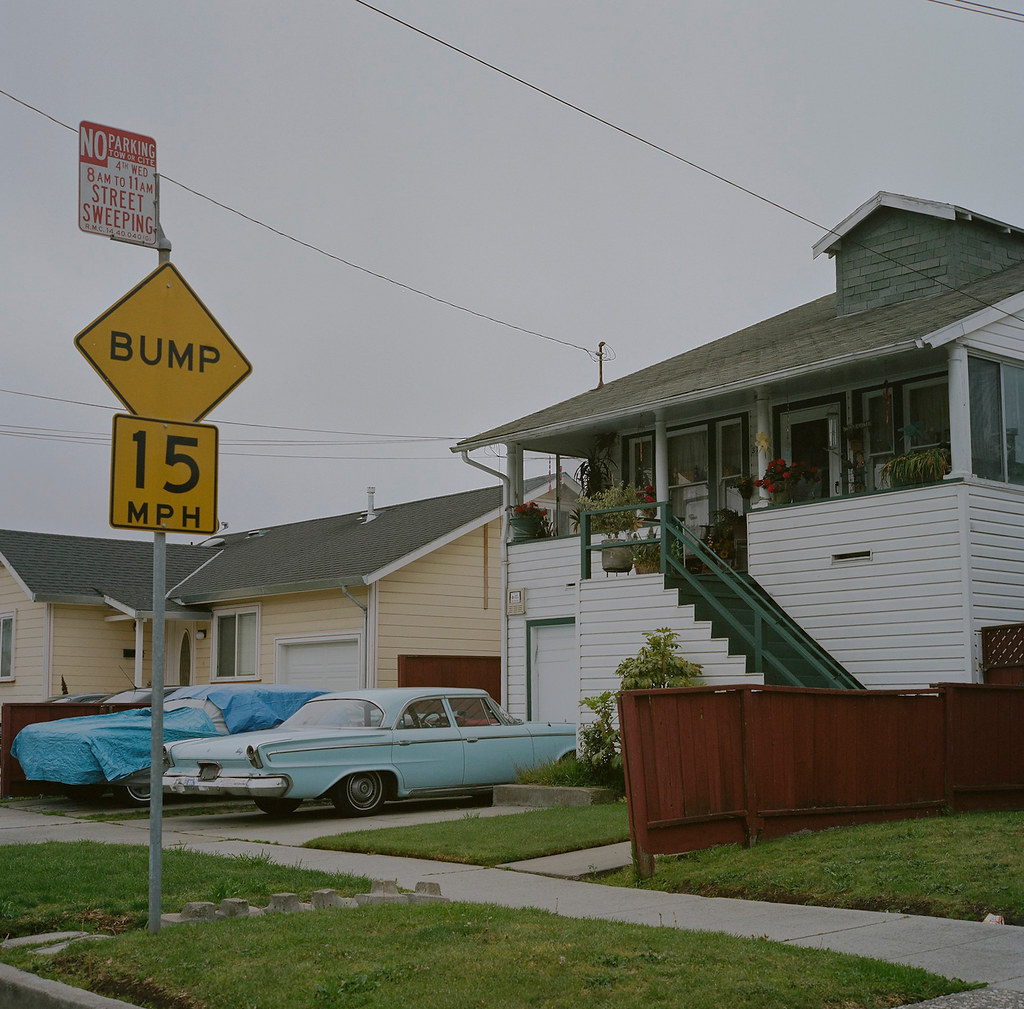
Untitled (Richmond, California): photo by Christopher Hall (Dead Slow), 21 January 2013

Untitled (International Travelall, Alameda, California): photo by Christopher Hall (Dead Slow), 8 February 2013
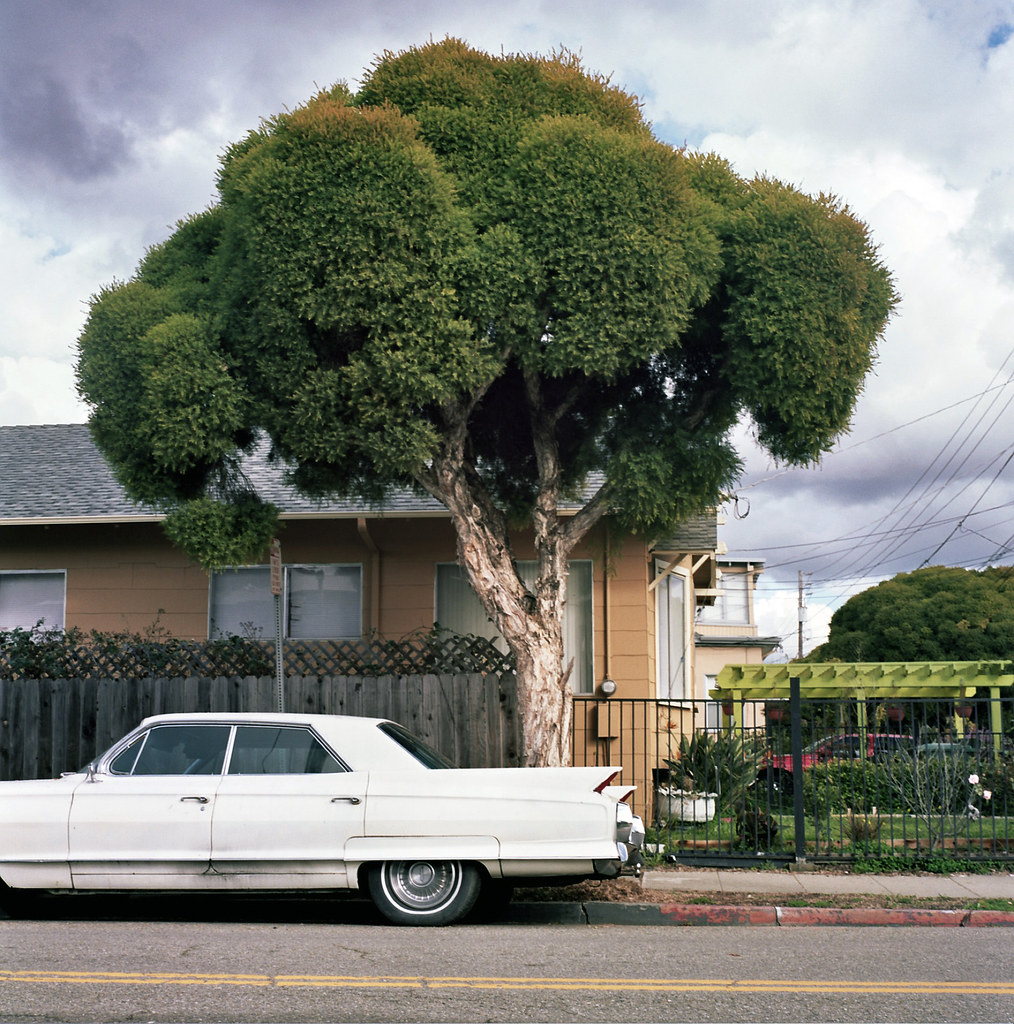
Untitled (Berkeley, California): photo by Christopher Hall (Dead Slow), 2 May 2013

Untitled (Ford Falcon, Alameda, California): photo by Christopher Hall (Dead Slow), 2 September 2013

Untitled (San Francisco, California): photo by Christopher Hall (Dead Slow), 9 August 2012



9 comments:
Is your work driven by or influenced by any other medium, such as film or music?
“Once in a Lifetime” by the Talking Heads was a very important song for me when I was in my 20′s, and it’s now my life long theme song.
-- from Chris Hall interview, American Elegy, 1 May 2011
Once saw --must've been 1961 or 1962-- Willie Mays in his glossy Huge-Boat Cadillac on Fillmore Street in San Francisco. Thanks, Tom, for the photo display... and for the excerpt from Samuel Beckett's "Proust," one of my favorites.
Red Shuttleworth
(Interior. Late afternoon. A diffuse October light comes through the window. Talking Heads plays in the background: Once In A Lifetime, then Houses In Motion.)
I’ll take some of that “extratemporal” beingness about now, and supersize it for me, please. “The most successful evocative experiment can only project the echo of a past sensation . . .” But what of memories not evoked, that spring to mind unbidden, and leave me wondering: Where did that come from? And why? Is it some electro-chemical anomaly of the brain? A synapse collapse, perhaps? I’ve enjoyed such spontaneous recollections all my life, some recurring, some new. A significant part of our memories, someone avers, are negative in tone. Nature must have set us up for that: once burned, twice warned. Jungle smarts. There’s talk these days, of a scientific sort, that says Time doesn’t exist. Maybe Bishop Berkeley has a comeback for that one too.
Great photos. The soft light makes for rich colors. That finny, bulbous “lancha” in photo #5 (a design monstrosity that only Buck Rogers could love) is most definitely a Caddy and not a Lincoln.
Strange how these obsessive projects, catalogues that confess to memory's fallibillity give force to the particular character of each recorded object (or at least that's the feel of it). Each vehicle catches the attention as a curious human face might.
I'm with Red on the essay.
"Time is not recovered, it is obliterated". That sentence gives us a good look into Beckett's own head as a writer.
To know that it's a unworkable job to trust even to our pictures of the past is hard.
Red, if there was ever a poet on this planet who deserved a lift to Parnassus in the back seat of a big white Cadillac convertible it's got to be you. With Willie and Peaches by your side naturally.
Another bit from that Chris Hall interview:
"What got you interested in photography?
"I remember getting a camera from my dad when I was a teenager, and, like many others, I used it to document things in my life. I went into the Army right after high school, and took advantage of inexpensive photo labs provided on base. I was stationed in West Berlin and later West Germany, so there was a lot of stuff I shot that was of interest to me then, and which later became fairly historical."
I gather that a large part of the audience for Chris Hall's car photos is German. Which I find interesting, as the kind of involuntary memory which is Beckett's (and Proust's) subject has to do with personal history and association and familiar contact; and of course, someone who is not American would not have had that sort of familiar connection. So one might assume that a fascination with old things from somebody else's culture must have to do with the feeling of strangeness involved.
WB, To record something because it exists does seem a kind of unerring baseline approach. There is a discipline here, and over the course of the series the consistency of the discipline itself proves fruitful -- much as with, for example, an artist like Ozu. The square frontal framings give the compositions a "documentary" feel, which is interesting, as of course are the subtle "accidental" color coordinations. Any sociological or historical perceptions are left to the viewer. I had mine. But of course, how could I not? I live here, and 60,000 cars roar past the house daily -- now that the benign redwood cover has been torn away there's no escaping the horror of it. And these are not the babied and indulged vintage collector Detroit classics, but the more "economical" products of a later epoch. But still, the noise, the stink, above all the danger; one of those cars very nearly killed me last year. I don't drive, so the religion of the automobile is one I am able to regard with at least the degree of dispassion a steer regards a captive bolt gun. Evening rush hour right now, it's the Indy 500 out front. Again.
Hazen, Your attention to detail embarrasses mine, old friend, and not for the first time. That errant Lincoln caption drifted over the cobwebs from one of the adjacent attributions, I reckon. In any case, the car in #5 is indeed a 1960 Cadillac Coupe de Ville (I've now corrected that, thanks). As usual, you nailed it.
1960 Cadillac Coupe de Ville
And while we're doing admissions, let me confess that not only the attribution caption but the dating was a bit off on #5. I had it as 2009; in fact the date should be 2011; so that big boat has now been re-docked accordingly.
The sequencing of the photos in the main body of the post follows chronology pretty strictly; it seemed that form of display would permit a useful view of the development and progression of this series over the years.
By the by, Hazen, just for fairness' sake, I did hobble round the virtual block to fetch a formidable Lincoln... that IS a Lincoln. And made room for it in the fossil lot. See new photo, third from bottom: Untitled (Berkeley, California), 2 May 2013.
By the by, some who loiter here may recall that one of the most striking photos ever posted at this site was Chris Hall's remarkable image of the silent vaultlike interior of the abandoned Southern Pacific Station in Oakland ("Oakland Station 0047") which appears about a dozen images from the bottom here.
Tom,
Thanks for introducing me to these beautiful photos and thoughts on memory. Hall's "happy accidental discovery, which I now doggedly pursue" could stand as a pretty good definition of making art itself.
-David
I think it's almost better to encounter these words and picture in a fairly exhausted, but still receptive, state, rather than in the morning when my brain has started racing for the day.
"axis about which the sensation pivots, the centre of gravity of its coherence"
That's great.
I was unfamiliar with Chris Hall and am hugely impressed. (I'm impressed also by Ruthie Witherspoon of Berkeley, who has maintained her Thunderbird is such fine condition.)
I'm wondering whether the Germans respond to the photos, at least in part, because they identify with the quality of light in the pictures, which is such a big element in the work. To me, it seems kind of like German light.
Exhaustion resumes now.
Curtis
Thanks, David and Curtis. I had figured both of you, astute judges, would appreciate Hall's work.
That quality of "dogged pursuit" -- the relentless semi-obsessive quest of a formal discipline, executed with close attention and occasional fruitful creative variation over a period of many years, is the very thing that makes the work so interesting to me.
It's a way of seeing finally, and a kind of "classical" composure.
Silence is always difficult moment to introduce into a work. Hall seems to rely on it. His working methods seem directed largely to staging compositionally that shock which is felt when one senses one time unexpectedly juxtaposed with another.
Haven't been well of late (feeling the too many years), ergo much time in the dark, replaying the brain movies perforce. This past week's scenes from the past were consistently influenced by Dead Slow framings.
Post a Comment